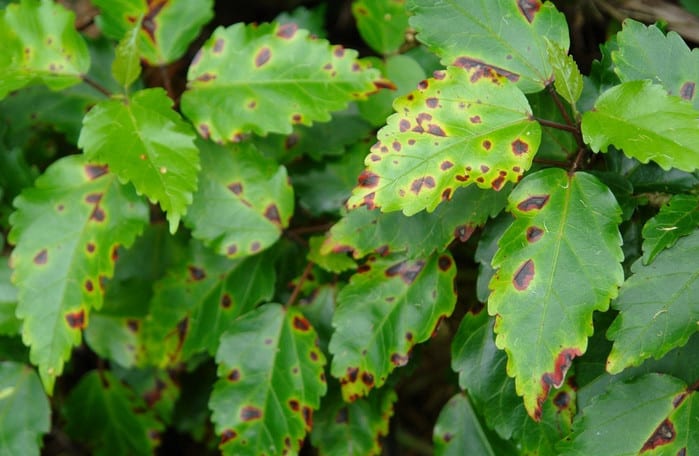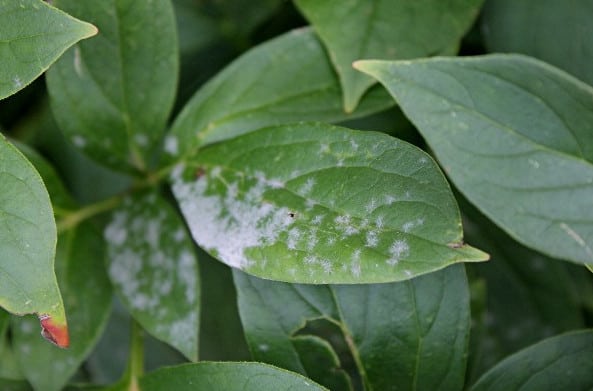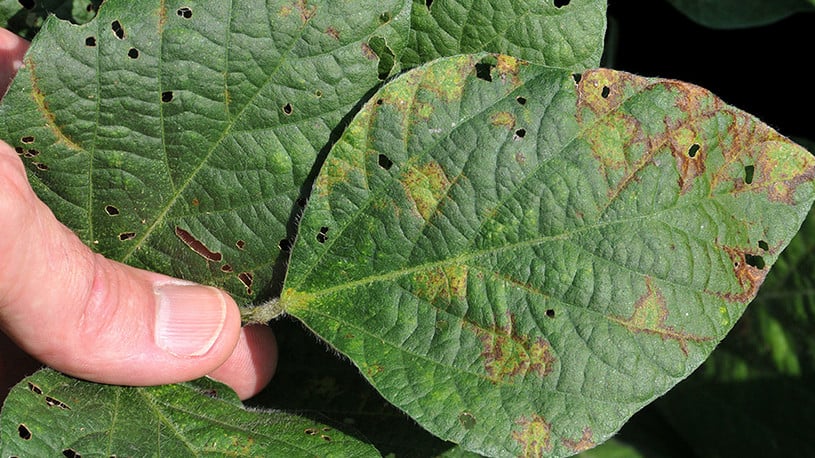Every garden lover dislikes one thing i.e., a plant disease. So, if you have just started your gardening efforts, you need to get a hang of some symptoms so that you can recognize whether a plant is healthy or not.
The most common reasons for a plant disease are virus, fungi or bacteria. Here we will let you know about each of them so that your gardening efforts can be more fruitful.
Bacteria
You should know that not all bacteria are bad for the plants or soil. Most of the bacteria are really beneficial and they are in millions. In contrast, there are 200 types of bacteria that can lead to disease in plants. These bad bacteria are very active during humid and warm environments. So, you need to keep an eye for them during these seasons.
Though there are many symptoms of a bacterial infection in plants, one of the most common is leaf spot in which the bacteria that not only attacks a plant but also produces a toxic chemical that plays the key role in killing the surrounding plant cells.

A plant then reacts defensively by killing the infected plant cells and isolates them. In some of the cases, these dead cell areas drop out which creates something that looks like shot holes in leaves of the plant.
Bacteria can also clog the ability of a plant to deliver nutrients and water to the rest of the plant. This makes the plant wilt or even droop. As this process is quite swift, you can see a dramatic decline in the plants in just one day.
Some of the other symptoms that can lead to plant tissue decline are soft rot and cankers that are sunken areas produced by the dead plant tissue. In a few cases, the abnormal growth of a plant known as galls is a key symptom.
Plants usually respond to these kinds of bacterial invasions by producing a rapid abundance of new cells which is often visible as unusually large or misshapen growths somewhere on the plant or its root.
Plant-bacteria can spread in many ways like splashing water, insects, other tools or even due to other diseases. Bacteria usually enter plants via tiny openings that are a result of cuts, damage and natural openings of the plant.
Once your plants are affected by bacteria, it can be a difficult task to control them. You should seriously consider options lie removing infected plants or parts immediately from the garden. You should also remember to not add the parts to the compost pile, you should just destroy them.
Once bacteria are present, controlling them becomes quite difficult. One of the things that can help is copper based spray but they are not a cure. You should know that plant bacteria are best controlled as a preventive manner by treating the plants even before the damage is present.
You should also stick to good cultural practices such as removing all plant debris, ensuring sanitation of equipment, etc.
Fungi
Some fungi can actually be good for a garden but most of the fungi (in fact thousands of them) are harmful to your plants. This is why you will face fungal problems quite often. You should know that fungi are present in the soil.
Some of the symptoms of a fungal attack are large swelling on roots below ground, rotting or dead roots, etc. At the soil level, new seedling stems can rot or flop over. Above the soil, the plants can show signs like wilts, rusts mildews or spots.

It’s a fact that fungal spores are not only light and small, they can also travel great distances via air to infect other trees or plants. They can even spread by insects, animals, water, and people.
The best way to ensure that your plants are not attacked by fungi is to purchase disease resistant varieties if possible. You can also try reducing the use of water contacting foliage, watering early in the day, watering at soil level, etc.
The last two will ensure that the foliage dries out quickly if it becomes wet. You should also make sure that there is proper spacing between plants, regular pruning, and good air circulation.
If you need to control fungal outbreaks, you should remove all the infected parts of the plant or the whole plant if the situation is bad. You can also try applying a fungicide. Some of the common products that might help with treatment in an organic manner are sulfur, copper, baking soda, etc.
You can also opt for synthetic products. These treatments usually work well towards preventing the germination of new fungal spores, so the application you do before outbreaks occur will offer you the most effective control.
Viruses
Like fungi, only a few viruses are good news. Mostly, they are bad news as they can be present for years before you even realize that there is a problem. A common visible sign of a virus is that plant foliage appears yellow or as mosaic patches of yellow, white or even light green.

Another sign is that the plants may appear to be misshapen or malformed, the leaves may be puckered, rolled, abnormally narrow or swollen.
Viruses don’t spread via wind or water. They enter the plant physically. One of the most common vectors of viruses that you may have to deal with is insects because insects feed on infected plants and they transmit the viruses to healthy plants when they opt for feeding again. Some other ways of spreading of viruses are contact by humans, plant propagation, and infected seed.
You should realize that once the plants are affected by viruses, no chemical treatments are going to help. It would be wise to remove all the infected plants or even the ones you suspect are infected. This is the only sure fire way of ensuring that virus infects all the plants.
You should also look for virus-resistant cultivars or ensure the presence of physical barriers such as row covers, floating. It is also a good idea to eliminate any and all vectoring pests who are hoping to enter your garden.
